I have been retired for several years and miss the social experience of sharing the research process with graduate students and faculty colleagues. Many of my interests are still very similar, but after moving to a different city, I no longer have day-to-day acquaintances with those kinds of interests. This has resulted in an interest in tools that offer note-sharing capabilities.
There is still the challenge of finding others with similar enough interests that sharing is attractive. This post will describe Glasp as a solution. At present this app is free. It offers several ways to share public notes without first having to go through a familiarization process to identify others with related interests, and the type of interaction that follows is up to you. Finally, Glasp has a built-in AI tool that offers an effective way to explore both someone else’s and your own notes.
The following shows Glasp. From left to right, the first column contains personal information and basic controls, the second column lists thumbnails of the pages I have annotated (these are web pages, and other sources such as Kindle books are accessed from an icon on the heading). The final column contains the highlights and notes from a selected source. The drop-down menu is what I wanted readers to understand as it includes a link for locating “like-minded users” (second image). Glasp analyzes the content you have stored and recommends other users with similar interests. I should make clear that you store content as public or private and when you use social capabilities it is only the public content that is visible.
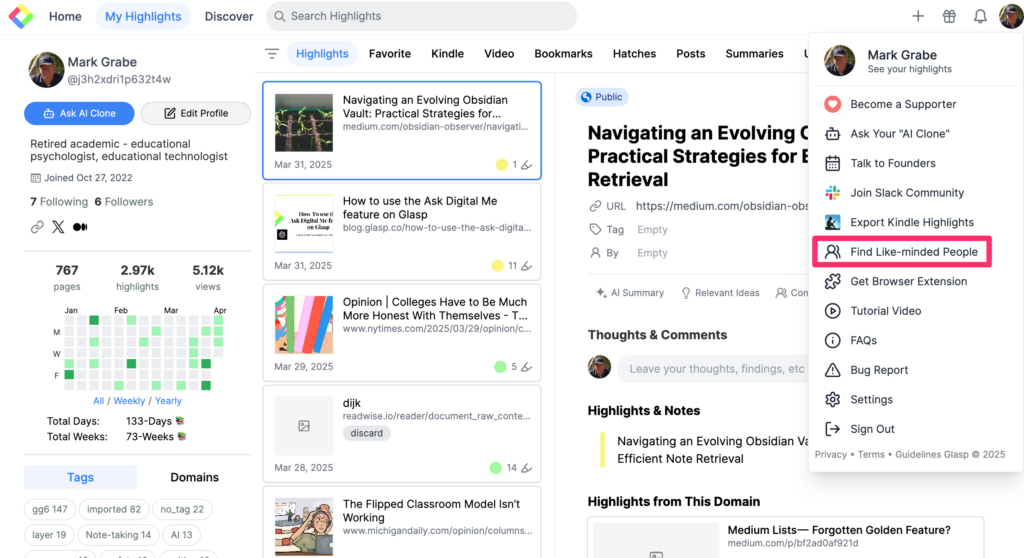
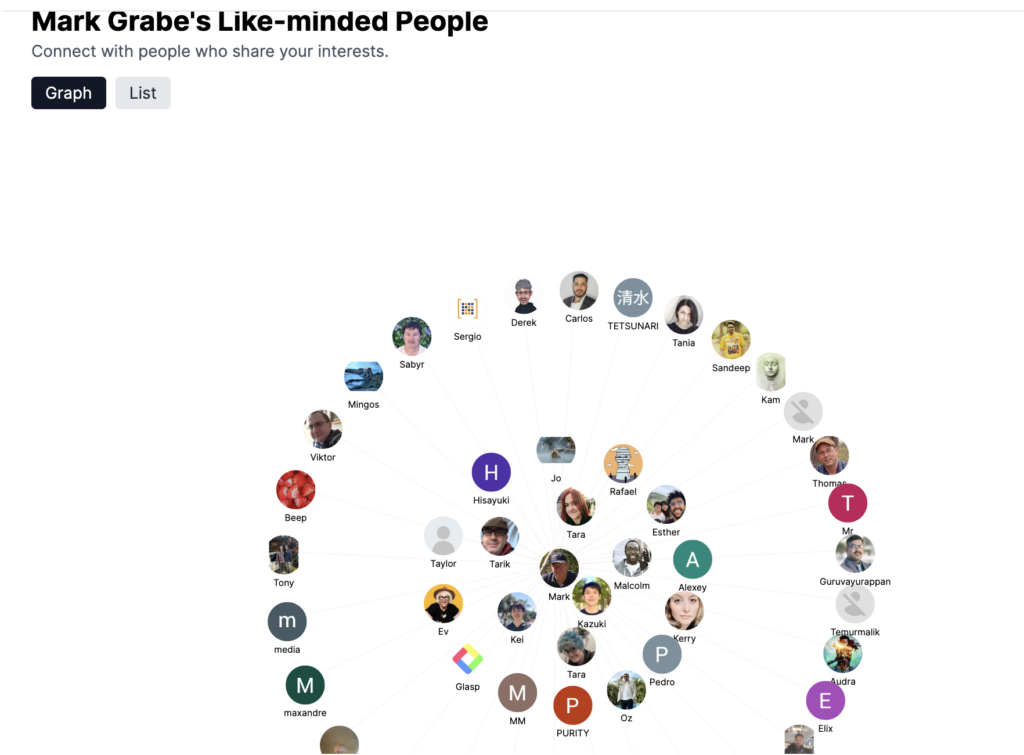
When you select another user, you are provided access to their site (read only) and you select to follow if you are interested.
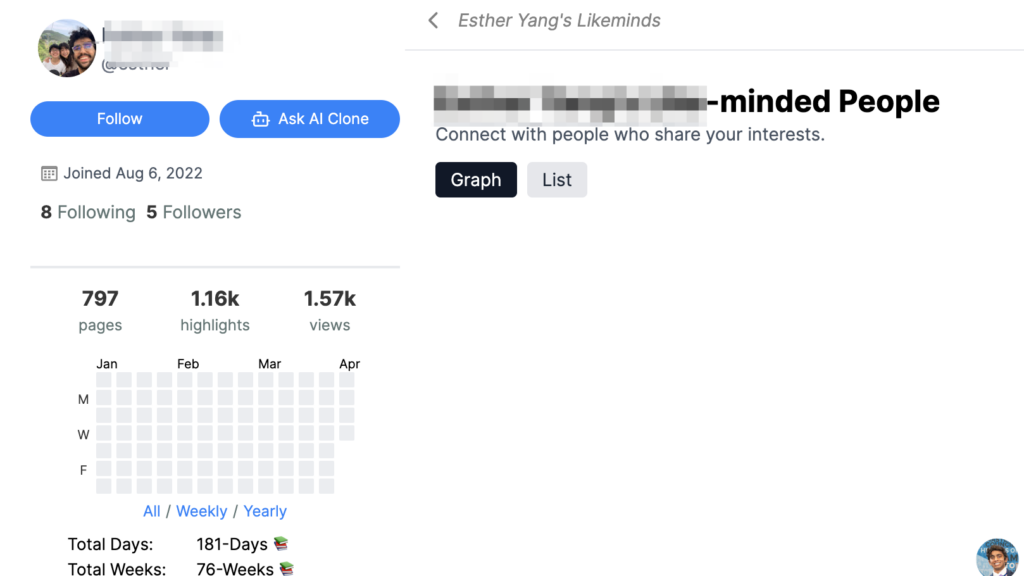
If you identify other Glasp user by other means, you can simply search for that individual and then access their site to follow that individual.
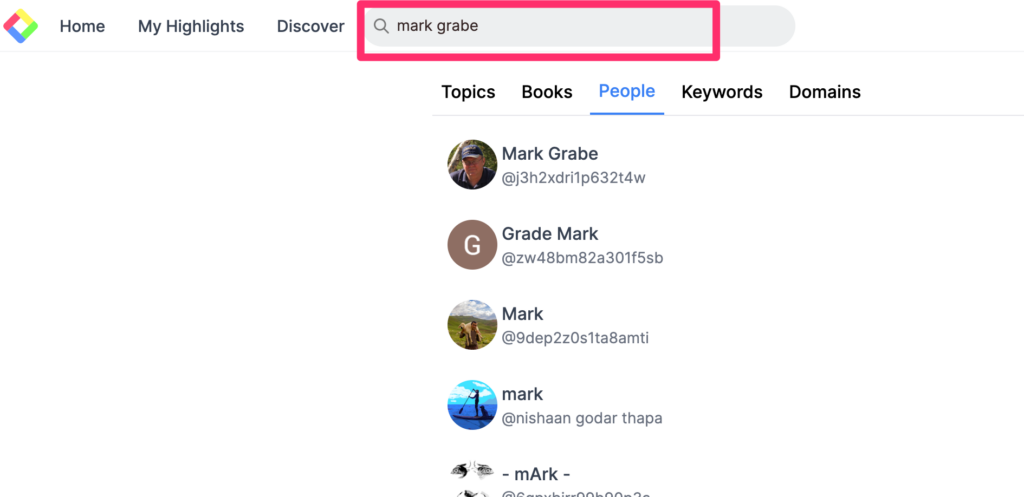
The AI feature
On your own site or the site of someone you have followed, a button located near the image icon of the site owner, allows access to the AI tool (following image). This is where you submit a prompt to chat with the content on that site (second image).
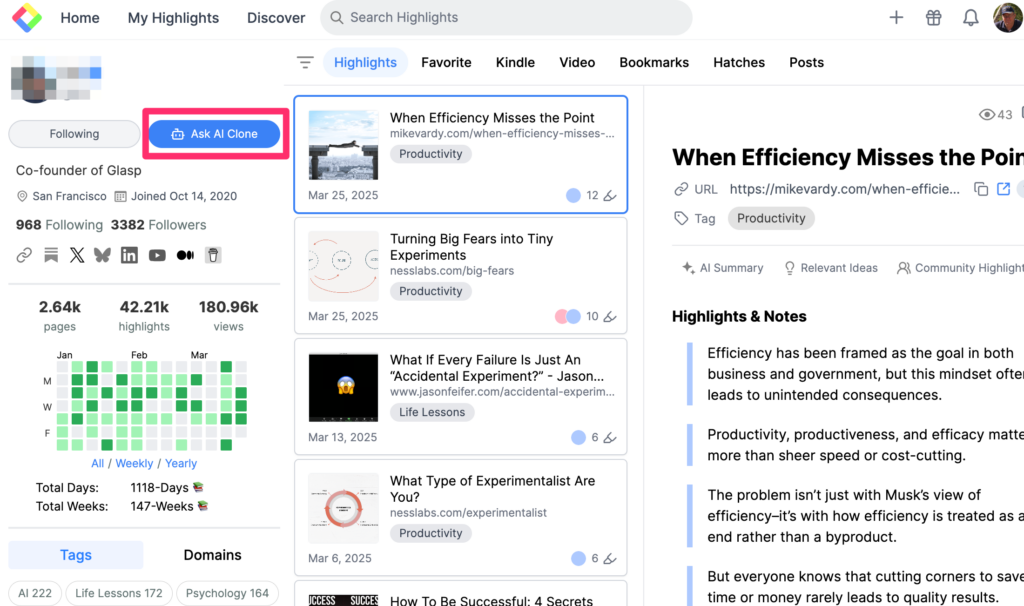
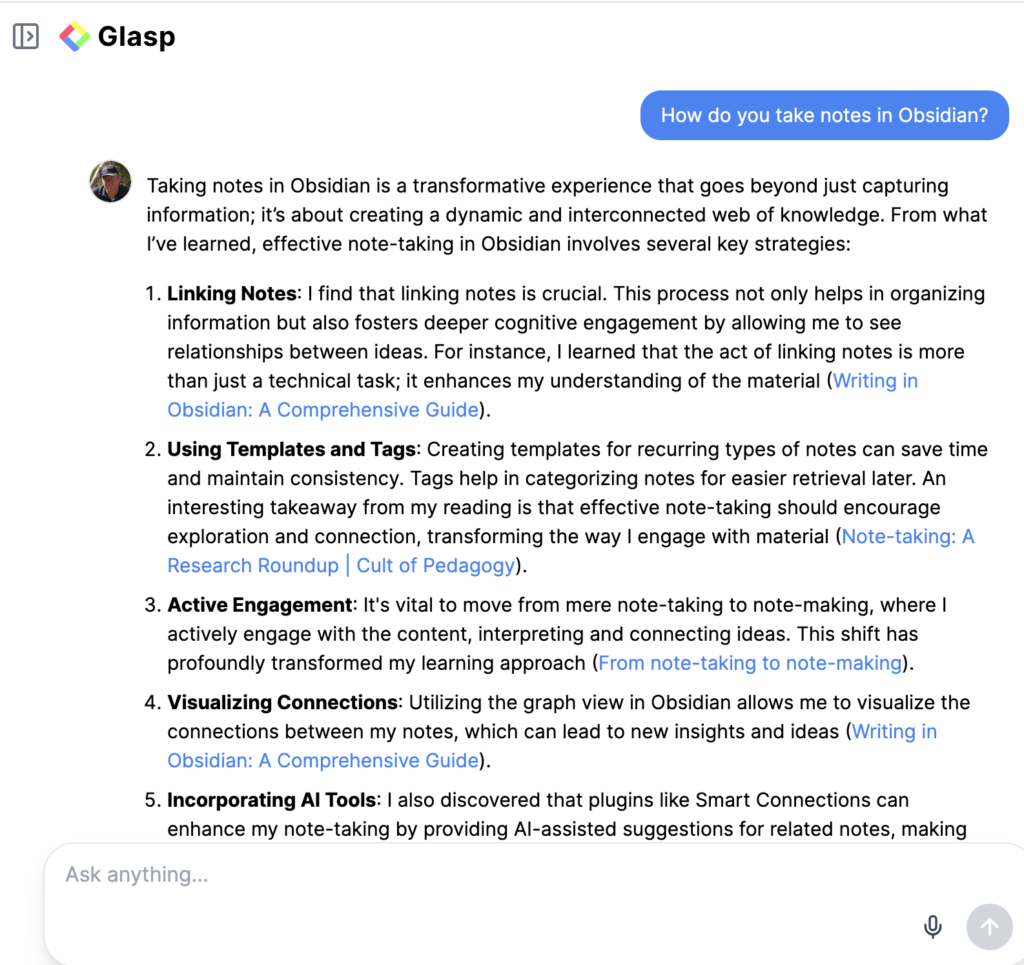
AI is a good way to explore a collection of content that is unfamiliar to you. With Glasp, you can use the output from a prompt to identify the source notes and move from there to the sources.
Connecting
I am interested in connecting with anyone who finds this tool interesting. You do need to create a Glasp account (free) to follow through. Without adding content to generate recommended matches, you can view my content by entering Mark Grabe in the search box to follow me. Glasp also offers a link that takes you directly to the AI prompt page for a designated user (link to my prompt page). This only connects if you have a Glasp account, but I guess it is provided so you do not have to identify yourself as a follower if an existing user wants to share content in this way.
I like Glasp and would have likely invested more time in the site for my professional reading (mostly journal article PDFs) if I had not already invested many hours highlighting and annotating with a different tool that does not transfer the highlighted content to Glasp. Glasp does include the highlights and notes I have generated from web pages and from Kindle books.
![]()